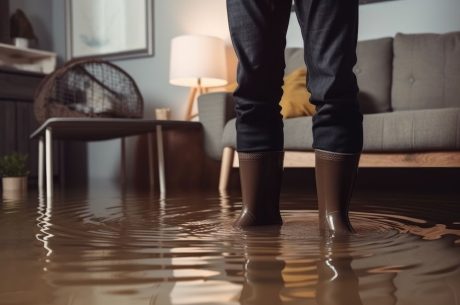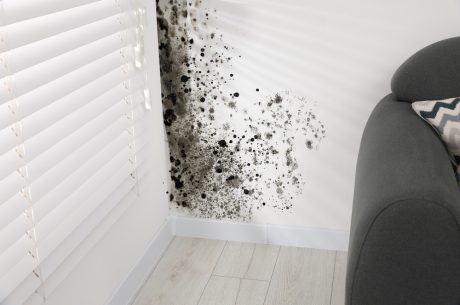
For a long time, bleach has been the go-to product for fighting mold. It’s true that bleach is a sanitizer that eliminates viruses and bacteria, but should you use bleach to deal with mold in your home?
While bleach can kill mold on hard surfaces, it’s ineffective when used on softer surfaces, which is where you’ll find the most mold. Plus, bleach may harm your health, as well as the surfaces you treat. Even The EPA does not recommend using bleach as a routine practice to kill mold. Check out more reasons why you shouldn’t use bleach to kill mold in your home.
- Bleach is ineffective at killing mold on many non-porous materials like drywall, wood, and carpet. In the case of these softer materials, mold spreads deep into the porous surface. The nature of bleach prevents it from soaking into these materials, so only the mold growing above the surface is killed. Bleach won’t kill mold on dirty and metallic surfaces either.
- Bleach contains a lot of water and may stimulate mold growth if you use it to kill mold on soft materials. The water in the bleach is absorbed by the material, feeding the mold that survived inside it. Consequently, mold may regrow on the surface within a week or two if the material isn’t dried properly. You can thus end up in a cycle of repeatedly trying to bleach mold, only to have it persistently return.
- Not only is bleach ineffective against mold on wood, it’s also corrosive and extremely harmful to these materials. Wood that is treated with bleach becomes weakened by breaking down its fibers. This can compromise the structural integrity of your home.
- Bleach loses its power with time – it is 50% less effective in 90 days even if its container is not opened.
- Using bleach can damage your health. Bleach can give you burns if it touches your skin, and the gas from bleach can harm your lungs. Contact with eyes may cause pain and irritation. Bleach can also damage the eye tissues if it stays for a longer time.
- Dead mold may still cause allergic reactions in some people. Thus, it’s not enough to simply kill the mold, it must also be removed.
So what are the alternatives? If you have a small mold infestation (less than 10 square feet), use natural mold killing products, such as borax, vinegar, or a simple solution of detergent and water, baking soda, and tea tree oil. These substances don’t pose a threat to your health.
And remember, after the surface has been cleaned, it must be dried properly. Drying is the key to keeping mold growth in check. If you have a larger mold problem, seek professional help from a mold remediation company. They can properly remove mold and dry the area to ensure mold doesn’t return.
For mold removal and water damage repair services, contact your local PuroClean office.



 PuroClean Emergency Restoration Services
PuroClean Emergency Restoration Services